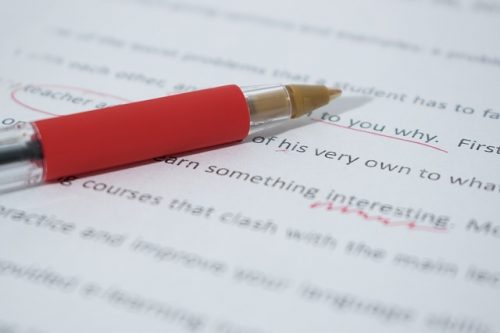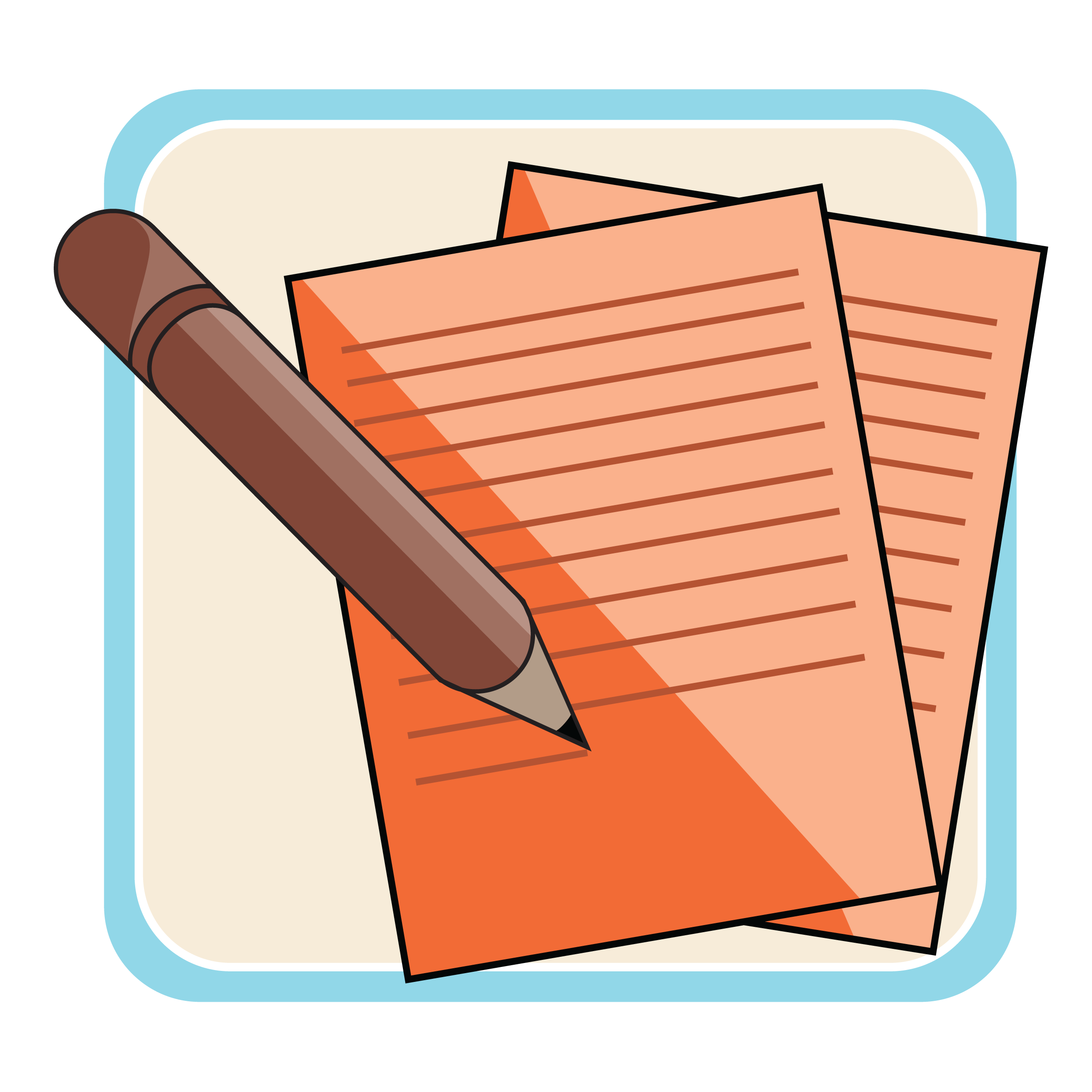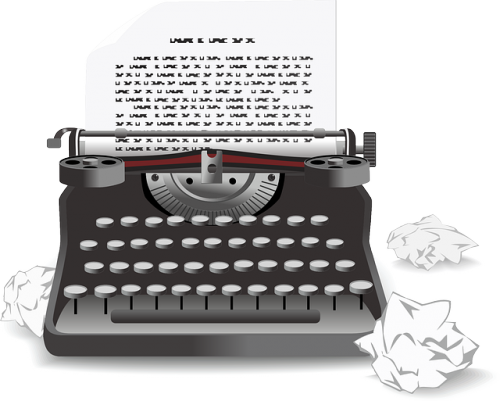As a student, your time is precious. You want to write a great essay, but you shouldn’t have to put all your other assignments, or your life, on hold just to do it.
That’s why it’s important to have a system. While “system” sounds like it sucks the creativity out of writing, it actually gives you the structure you need to be creative and focused. And there’s no better system than the writing process.
You may be asking yourself, What is the writing process? Well, that’s what I’m here to explain, so let’s get to it.
What Is the Writing Process?
The writing process is a certain set of steps many students and professional writers use to come up with creative, cohesive essays, dissertations, and novels.
You can adjust the writing process to fit your particular assignments and writing style, but it boils down to five steps:
- Prewriting
- Researching
- Drafting
- Revising
- Editing
There are a bunch of different ways you can approach these steps. It’s not a formula—more like a roadmap to follow from Point A to Point B to Point C and so on.
By following these steps, you’ll be able to remain organized while writing and have a great essay by the time you’re finished.
Let’s jump into the first step…
Step 1: Prewriting—Putting Your Ideas to Paper

The first step of the writing process, prewriting, is one of the most fun. There are a few different approaches to prewriting, and the one or ones you use will depend on what type of essay you’ve been assigned and your personal preferences.
Unorganized prewriting strategies
Brainstorming involves writing short statements, phrases, or even single words related to the prompt. It helps to write the prompt at the top of the page and write any words or ideas that come to mind.
Don’t worry about the validity of all of the ideas for now. The important thing is to get it all out there.
Freewriting is kind of like brainstorming in that it’s a way of getting your ideas onto a page. However, it’s much more stream-of-consciousness. Begin by writing for 10 minutes—without stopping—about the prompt or a specific topic.
It doesn’t matter if your spelling or grammar isn’t perfect. No no one but you is going to be reading it anyway. The goal is to see where your mind takes you and what ideas you come up with in the process.
Organized prewriting strategies
Outlining is my preferred organized prewriting strategy. Once you have a topic picked out, you organize your thoughts by listing your thesis, arguments for your thesis, and supporting evidence.
It’s okay if you don’t have every single detail at this stage. An outline can lead you to the basic structure of your essay.
Mapping is like outlining for more visual learners. One version of mapping is to put your topic in the middle of a page. Your main arguments will branch off the topic, and supporting evidence will branch off the respective arguments.
You can use other types of graphic organizers to visualize your ideas too.
Deciding which strategy is right for you
My suggestion is to use one unorganized and one organized prewriting technique to get the most out of the writing process.
Unorganized strategies are great for getting all your thoughts out with little to no interruption in your thought process. They help you figure out what to write about.
Organized prewriting strategies help you focus on one specific topic and write what you know about it in a, well, organized way. They help you figure out how to write about whatever topic you choose.
Step 2: Researching—Getting the Details

Once you have your basic ideas down, including any supporting evidence you can think of, it’s time to do your research. This helps you get the specifics you need to properly support your arguments.
If you’re writing a literary analysis essay, research includes looking for specific information within the book or play you’re writing about. You don’t have to reread the entire book. Just look for the points that relate to your topic.
If you’re writing a persuasive or research essay, your research will involve looking up credible articles online or in academic journals, watching documentaries, or looking at government websites—depending on your topic.
No matter where your facts are coming from, be sure to note the source, so you can credit the author(s) in your essay. This is important in avoiding plagiarism and making your arguments more credible.
Referencing Resources:
Remember, your notes should be helping you through the process—which means they should be organized. There are a few ways to do this depending on the type of essay you’re writing and the style of note-taker you are.
Here are a few go-tos for students:
- Old-fashioned pen and paper: There’s nothing wrong with this tried-and-true method. It allows you to have flexibility that isn’t possible when working in a Word document, such as drawing arrows or helpful illustrations. This method is a bit more time-consuming and not great for long periods of time because your hand might get a bit tired. Using index cards is a popular strategy with this method.
- Word document: Whether its Microsoft Word, Google Docs, or some other type of word processing software, you’ll get roughly the same experience. It’s quicker than hand-written notes, but you’re more limited in your creative freedom. You can still add emphasis to different parts of your notes through font and style changes, colors, and highlighting.
- Note-taking apps: My personal favorite is Evernote, but there are several others on the market. Some are free. Some cost a few bucks to download. These are helpful because you can organize your notes into different folders (you can have separate folders for each symbol you’re analyzing, for example). You can also use many apps on any device, so you can take pictures with your phone and paste them right into your notes if that’s helpful for you. All your notes sync across devices.
- Highlighting and annotating: Highlighting and annotating are kind of shorthand versions of the old-fashioned pen and paper method. They’re done right in the text, so you know exactly what you’re referring to. This is best for literary analyses because more than one or two books of highlighting and annotation requires more comprehensive notes.
Of course, you can find your own way, or use a combination of the ones listed here. The right way is the one that works best for you.
Step 3: Drafting—Fleshing Out Your Ideas
Now that you have your topic, a general idea on how to organize your essay, and some specific details you found in your research, it’s time to put it all together in the third step of the writing process—the first draft.
Many people think of outlining as a blueprint. If that’s the case, then drafting is like a detailed model—it’s not a perfect representation of the finished product, but an outsider could see the points you’re trying to make pretty clearly.
During the drafting stage, you don’t have to get caught up on spelling or minor grammatical errors. Instead, focus on fleshing out all your ideas.
This means building your arguments, deciding which pieces of research go where, and drafting an introduction, thesis statement, strong body paragraphs, and conclusion.
When you’re finished with your draft, it should look like an essay. But it’s not done yet. It needs revision to turn it into something worth submitting.
Need inspiration to get going on your first draft? See how other students have written about your topic.
Step 4: Revising—Creating a Decent Document
The revising stage is where it really comes together. Enter revisions through the mind of your reader. Here are some questions you might think about:
- Is there anything that might be unclear to them?
- Does the essay jump around in a disorganized or confusing fashion?
- Do you need transitions that make it easier to follow along?
- Are your sources cited properly?
One method is simply reading, rereading, and re-rereading, revising with each step. Another way is to write a reverse outline, which is basically just outlining the paper you’ve written.
The benefit to this is that you can see whether your paper is organized well, whether it meets the assignment guidelines, and whether all your ideas are sufficiently supported.
Whatever method you use, be sure to correct anything that might be confusing or inaccurate. Make your sentences into real prose instead of loose ideas. Correct any glaring mistakes in grammar, style, or spelling.
There’s no shame in revising more than once. When you’re finished revising, you should feel that, even though it’s not your best work, it’s still representative of your skills as a writer and probably passable (depending on how your teacher treats minor proofreading errors.)
Step 5: Editing—Polishing Your Essay

Editing should be saved for the very last step of the writing process. Too many writers, both students and professionals, get caught up in editing as they go. This is a big waste of time. Oftentimes, you end up deleting or changing large chunks of text anyway.
When you’re editing, you should be looking for grammar and spelling mistakes. Any time you make a change, be sure to reread the paragraph or section to ensure it still makes sense.
After You Finish the Writing Process
Now that you can answer the question that brought you here, What is the writing process?—it might seem like there are a lot of steps involved. Some might not even feel all that necessary.
However, by following each step, you can:
- Use prewriting to choose the best topic for the prompt and organize your thoughts.
- Effectively research to back up your arguments with credible facts.
- Write a faster, more cohesive draft.
- Revise to make your writing appeal more to the reader.
- Make the edits that give your paper the finishing touches it needs.
If you’re finished with your essay but still don’t feel 100% confident, that’s okay. Even the best writers have editors. That’s because no writers can catch all of their own mistakes.
For you, the editors at Kibin are prepared to be your second set of eyes. They’ll not only catch spelling and grammar errors, but also suggest changes in formatting or structure if needed.
Now, get out there and make the writing process work for you.

